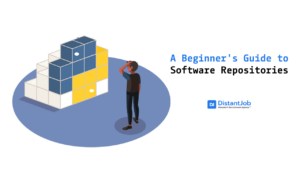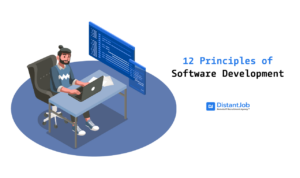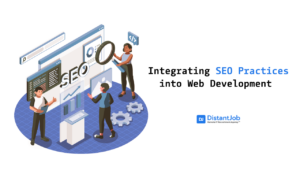Data Integration is the process of combining all of a company’s data in a central repository for both consolidated storage and deeper analysis of related data. This is especially useful for Business Analysts and Business Intelligence (BI).
The benefits of data integration are many, and in this article, we’ll explore the concept as well as the ways it can be implemented.
What Are The Business Benefits Of Data Integration?
Data integration gathers all information and data under one roof, and that by itself is a huge advantage, but it’s the other advantages that come from this gathering of information that entices business owners:
- Less data complexity: Without data integration, business information is segregated in various platforms with distinct interfaces, preventing them from communicating well. Using data integration allows businesses to bridge the gap between the various departments and the information they collect, simplifying it.
- Better data availability: Having a centralized place for all your data makes it easier for everyone to access the information they need to perform their job. This fosters collaboration and knowledge-sharing among departments and, in turn, helps your teams create better products and innovate.
- Easier data validation: Instead of constantly checking data replicated in various platforms, accessing data integration platforms allows for an easier way to keep data consistent and easily spot and correct duplicates or errors.
- Faster decision making: With good access to accurate and up-to-date information provided by data integration, decision-makers can make faster and better decisions that have more impact on business.
Approaches to Data Integration
You may be wondering, “What is a data integration strategy?”. A data pipeline can be implemented in many distinct ways, depending on the primary need for data consolidation, and it’s important to define a viable way to do it.
Let’s look at some of the most commonly used data integration processes:
Extract, Transform, Load (ETL)
In an ETL pipeline, the data is extracted from its original source, transformed in a staging area, and loaded onto the target system (like a database or a data warehouse). This approach is best used when dealing with small datasets that require complex transformations.
Extract, Load, Transform (ELT)
A system very similar to ETL, but the key difference is that the data is loaded onto the target system and only then is transformed. This approach is more commonly used when datasets are fairly large, and you want them available as soon as possible since loading the data is usually far faster than transforming it.
Data Streaming
Data Streaming is the continuous process of moving the information to a central system in real-time as it is created or modified in the various linked applications. It is then consumed and analyzed in this central point and presented for anyone to see.
Data Virtualization
Data Virtualization, much like Streaming, is the process of accessing the information in a central system, but the difference is that it does not move that information from its original place. Instead, it is accessed in real time from its original source and processed as needed.
Application Programming Interface (API) based
In this case, the different applications speak and transfer information between each other using well-defined interfaces. This can quickly bloat a system if the volume of data is large and if there are many applications involved, so this is best used on systems that have low numbers of both.
Data Integration Examples
Now that we know the types of data integration available, what is an example of data integration? Let’s look at some common use cases:
- Department Collaboration: The most common use case for these types of integrations is their use by the business’s staff. As we’ve established previously, a data integration system can be very beneficial to not only keep all information up-to-date and consistent, but can also foster the various departments to work together and bring about innovation.
- Increased Customer Satisfaction: by having a system that consolidates all the information from a customer, both sales and support teams can make better decisions that will make the customer happy.
- Consolidation of Information: When you have several data points that you need to evaluate and analyze to make business decisions, it’s important to have a central system that gathers, manages, and updates this information in a reasonable time frame. A data integration system can be the answer to this need.
Frequently Asked Questions
That’s what Data Integration as a concept is all about: the consolidation of data and information from distinct and often independent systems into a single point of reference and maintenance.
1. API based: Transmits data by using connections that bridge the gap between data points.
2. Webhooks: An event-based system that uses HTTP callbacks to propagate changes.
3. Integration Services Components (ISC): Uses a main server to connect all software integration tools.
4. Orchestration: An automated solution that schedules tasks between data integration software and keeps all data up-to-date.
There are many solutions in the market today, but some of the best data integration platforms are:
1. TIBCO Cloud Integration
2. Matillion
3. Microsoft’s SQL Server Integration Services (SSIS)
4. Oracle GoldenGate
5. SolarWinds Task Factory
6. Astera Centerprise
7. Boomi
8. Pentaho
9. SAP Data Intelligence
10. Qlik Replicate
A SAP certified application associate is a person that took and passed an exam that tests the core knowledge needed to maintain and update a SAP System. Part of this exam also tests the person’s capability of implementing data integration with SAP data services.
The best way to evaluate your data integration and process standardization is by establishing the quality of your data. This can be done by implementing metrics such as:
– Ratio of Data to Errors
– Number of Empty Values
– Email Bounce Rates
There are some other metrics that can be defined but not exactly determine the quality of your data, but rather their usefulness and cost to upkeep. Data Storage Costs are important to evaluate over time. If you are keeping some data that is rarely used and costs a lot to maintain in your servers, it’s time to determine if it’s feasible and/or viable to keep it that way, change it, or drop it altogether.
Conclusion
We hope we’ve given you a good primer on data integration definition and its common uses and methodologies. While it can be a complex system, it is very important when trying to consolidate a business.
If you’re looking for data engineers to help you create or transition to a data integration system to consolidate all your business information or any other kind of expert developer, DistantJob can help you find the type of staff you need at competitive rates and that has a great culture fit for your company. Get in contact with us!




